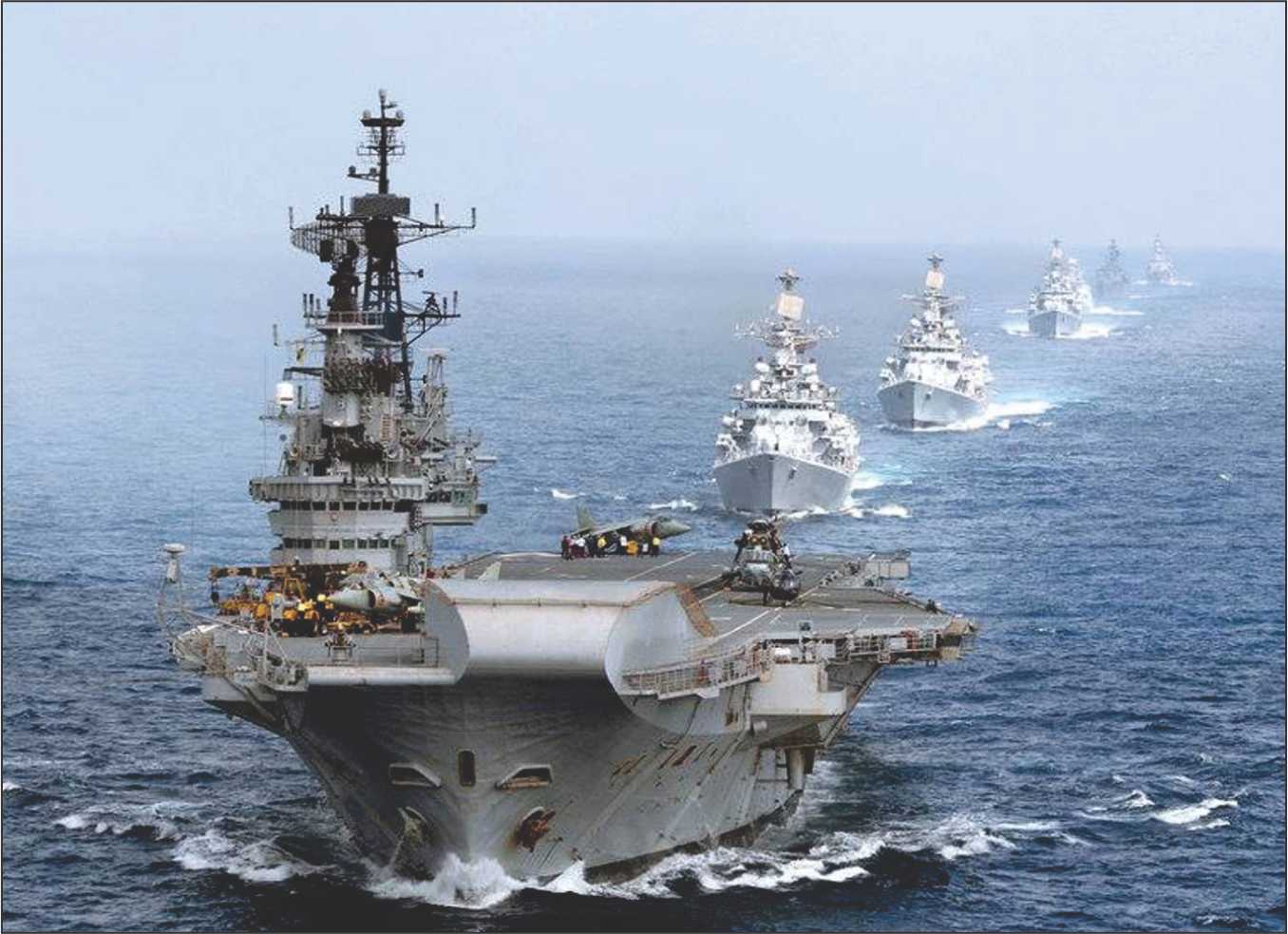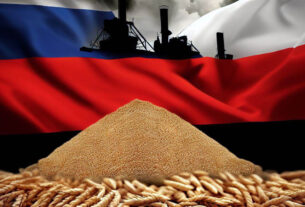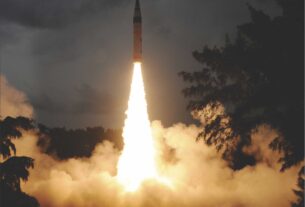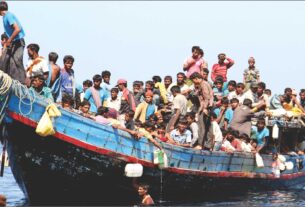Strategic significance of Indian Ocean region
“The Indian Ocean area will be the true nexus of world powers and conflict in the coming years. It is here that the fight for democracy, energy independence and religious freedom will be lost or won.”
Robert D. Kaplan
World is moving towards the geo-energy era which would completely change the world power scenario and would reconfigure its inter-state relations. The energy security and resource potential would be the key to rejuvenate mutual relations and create conflict in the times to come.
The geostrategic location of the Indian Ocean in South Asia between India, China and Pakistan, the three nuclear powered countries of South Asia has pictured clearly its arena in the contemporary geopolitics today. It has immensely charged its political, strategic and economic activities in the world because of which the regional powers are placing great reliance on the deployment of fleet missile submarines for maintaining balance of power in order to deter hegemony of any power whether territorial or extra-territorial.
It is quite imperative to say that, whosoever controls the Indian Ocean would govern the future center of economy in the world as it has one of the most important ocean trade route lying from the Red sea, Persian Gulf region via Indian Ocean through the Strait of Malacca to China, Korea, and Japan and Australia mainly. It acts as the bottleneck of South Asian economy as important arms, nuclear weapons, medicinal drugs etc are transported via Suez Canal to South West, South East and East Asia through it. The key choke points in this region are the Strait of Malacca, the Strait of Hormuz, and Bab el Mandeb, which could tilt the balance of trade further towards Asia.
Increasing piracy activities in the Strait of Malacca demonstrates what can happen when free and secure access through a choke point cannot be ensured. There are 36 littoral states around the ocean, eleven hinterland states e.g, Afghanistan and Nepal, which are keenly interested in the Indian Ocean politics and trade. As far as its marine resource potential is concerned, the ocean contains several important minerals: 80.7% of world extraction of gold, 56.6 % of Tin, 28.5 % of manganese, 25.2 % nickel and 77.3% natural rubber. Highest tonnage of the world goods, 65% of world oil, and 35% of the gas, located in the littoral states, passes through it.
The Indo-US collusion in the Indian Ocean has made Pakistan and China wary of their semi-hostile overtures, hence ensuing strategic competition in the region and employment of resource-dependent strategies to counteract and counterbalance the enemy state’s maneuvers.
Securing interests
The new US Strategic Guidance 2012 has linked the US economy and security to developments in the Indian Ocean, elevating India to the position of a long-term strategic partner serving “as a regional anchor” in the region. Political relations in and around the Indian Ocean has significant implications for the mightiest naval power, US as far as its new “Asia Pivot” strategy is concerned. The official documents also declare Iran and China as two potential states most susceptible to using asymmetrical means to counter US’ areas of interest.
Both India and Pakistan, the regional rivals have extended their activities in their territorial sea regions and economic exclusive zones to harness marine resources and protect their waters. Pakistan’s major interest in the Indian Ocean is preventing India from intruding and dominating the areas closest to Pakistan itself, and protecting its vital import and export routes. Pakistan by itself can do relatively little about India’s naval presence in the Indian Ocean; therefore, it has turned to two things: developing its naval power and having large external balancers. The US perhaps does not consider Pakistan as a reliable state in shoring up its Indian Ocean security, especially in light of the growing US security dialogue with India. China has a vital role to play here. Pakistan’s economic stake in Indian Ocean security, like India’s, is considerable: its fragile balance of payments is dependent on sea trade; 95% of its trade and 100% of its oil import is transported through the Indian Ocean. Pakistan is gradually shaping up by improving its naval and military power and developing alliances with China at the same time.
As it is already clear that Indian Ocean is a hub of energy, India is seeking to enhance its involvement in the region, by increasing its influence from the Plateau of Iran to the Gulf of Thailand. Claiming to become the world’s fourth-largest energy consumer, after the United States, China, and Japan, India is dependent on oil for roughly 33 percent of its energy needs, 65 percent of which it imports, and 90 percent of its oil imports could soon come from the Persian Gulf. Another reason behind developing naval power is India’s “Hormuz dilemma,” its dependence on imports passing through the strait, close to the shores of Pakistan’s Makran coast, where the Chinese are helping the Pakistanis develop deep-water ports.
In order to protect its vital interest as well as to establish itself as a super-power, India is pushing up its navy in the same spirit.
Among the latest developments in this effort, Indian Navy has inaugurated its latest naval base-INS Dweeprakshak-in the Lakshadweep Islands under the Southern Naval Command. It is meant to face Chinese ‘string of pearls’ strategy-an effort by China to cut-off India from the other nations of the Indian Ocean. India is planning to spend almost $45 billion over the next 20 years on 103 new warships, including destroyers and nuclear submarines. By comparison, China’s investment over the same period is projected to be around $25 billion for 135 vessels.
Energy route
Indeed, as India extends its influence east and west on land and at sea, it is bumping into China which is also concerned about protecting its interests throughout the region and is expanding its reach. The paramount concern animating Chinese interests in the Indian Ocean is energy security, an imperative that has been widely debated in media and academic studies. It is facing “Malacca Dilemma”. It is no exaggeration to say that whoever controls the Strait of Malacca will also have a stranglehold on the energy route of China. Excessive reliance on this strait has brought an important potential threat to China’s energy security. The Straits of Malacca is without question a crucial sea route that will enable the United States to seize geopolitical superiority, restrict the rise of major powers, and control the flow of the world’s energy.
The Chinese government hopes to eventually be able to partly bypass that strait by transporting oil and other energy products via roads and pipelines from ports on the Indian Ocean into the heart of China. The Chinese government has already adopted a “string of pearls” strategy for the Indian Ocean, which consists of setting up a series of ports in friendly countries along the ocean’s northern seaboard like, Gwadar, a port in Pasni, Pakistan, 75 miles east of Gwadar, which is to be joined to the Gwadar facility by a new highway; a fueling station on the southern coast of Sri Lanka; and a container facility with extensive naval and commercial access in Chittagong, Bangladesh. The Chinese government is also envisioning a canal across the Isthmus of Kra, in Thailand, to link the Indian Ocean to China’s Pacific coast- a project on the scale of the Panama Canal and one that could further tip Asia’s balance of power in China’s favor by giving China’s burgeoning navy and commercial maritime fleet easy access to a vast oceanic continuum stretching all the way from East Africa to Japan and the Korean Peninsula.
Besides this strategy, China is cultivating its relations with the countries of the region through aid, trade and defence agreements. One important factor for China to built alternative routes is the fact that Indian navy, soon to be the third largest in the world after those of the United States and China, will function as an antidote to Chinese military expansion.
Broadly speaking, the success so far behind India’s foreign policy in the Indian Ocean region has been due to its focus on: using trade and investment; concessional loans; diplomacy, training billets in Indian military academies for foreign military personnel; capacity building programs in education, government and military affairs; and defence cooperation etc. It is evident that Indian Ocean has assumed a central place in the strategies of the major powers of the world and the regional powers also. Like a microcosm of the world at large, the Indian Ocean region is speedily developing into a region of both “ferociously guarded sovereignty” and “astonishing interdependence” The Indians and the Chinese are likely to enter into a dynamic great-power rivalry in these waters, with their economic interests as major trading partners locking them in an uncomfortable embrace; while Pakistan would continue to assert its position by establishing alliance with China and by building its own capacity, especially naval power.
In view of the circumstances and geo-political realities, the US will have to change its posture from that of dominance to a sort of indispensable relationship with the regional powers, including Iran and Pakistan. It should, in future, act as a mediator, a balancer between China and India.




